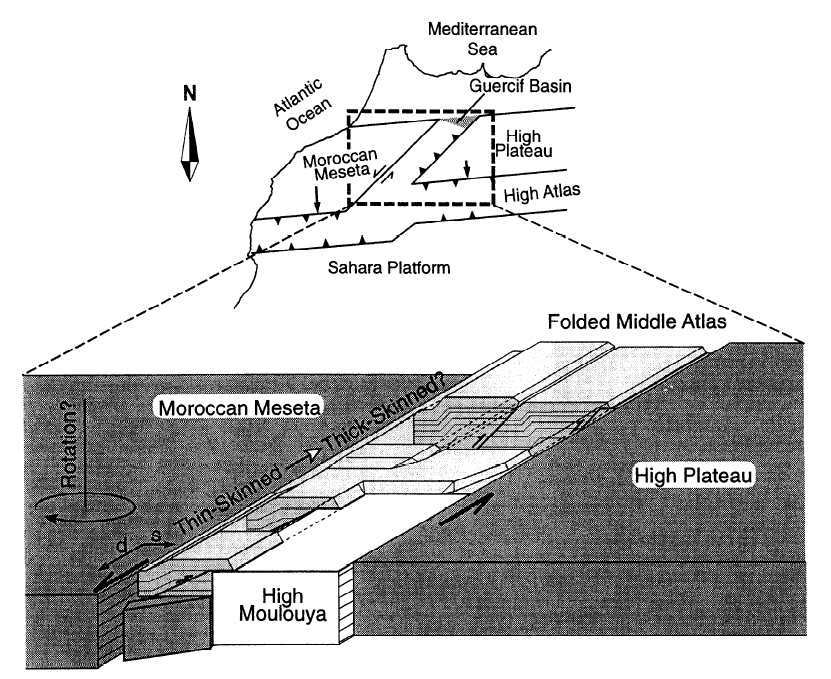Home |
Publications
Gomez, F., Allmendinger, R., Barazangi, M., Er-Raji, A.,
and Dahmani, M.
Crustal shortening and vertical strain partitioning in the Middle Atlas
Mountains of Morocco
Tectonics, 17, 520-533, 1998.
Abstract
The NE-SW trending Middle Atlas Mountains of
Morocco are obliquely oriented within the late Cenozoic regional stress field,
resulting in deformation that is partitioned into strike-slip faulting and thrust-related
folding. In the central Middle Atlas, thrusting is confined to a 20 km wide fold
belt between two relatively rigid crustal blocks that are obliquely converging.
We suggest that in addition to strain partitioning observed in plan view, a partitioning
of deformation between the upper and lower crust may be necessary to reconcile
estimated crustal thickening and horizontal shortening within the fold belt. Cross-section
balancing based on field observations demonstrates a relatively modest amount
of Cenozoic horizontal shortening (~ 4.7 km) normal to the fold belt producing
800 m of structural relief. Yet, the geophysical data suggest this contraction
has not produced a significant crustal root beneath the fold belt; that is, the
belt does not appear to be isostatically compensated. Assuming all horizontal
shortening was accommodated by crustal thickening beneath the fold belt implies
much greater thickening than is suggested by constraints on the preshortened crustal
thickness. It thus appears that thickening does not accommodate all of the contraction.
We suggest one possible solution: The upper crust shortens by thickening (faulting
and folding), whereas the lower crust deforms laterally.
Copyright Statement
An edited version of this paper was published by AGU. Copyright 1998 American
Geophysical Union.
Link to AGU
Key Figures and Captions
Figure 10. Schematic diagram illustrating the Middle Atlas
as a sinistral contractional shear zone. Although detailed structural information
about the northern Middle Atlas is not available, the different implications
for that region are illustrated. Vertical strain partitioning is illustrated
in the southern and central region and may change to thick-skinned tectonics
to the north as shown by the cut-away sections. If more horizontal shortening
is occurring in the north, then perhaps a vertical-axis rotation of the Moroccan
Meseta relative to the High Plateau may occur. The arrow labeled "s"
denotes the magnitude of shortening orthogonal to the fold belt. Rotating blocks
beneath the thin-skinned region are intended to illustrate the contractional
shear zone and do not necessarily suggest the existence of regularly spaced
domino blocks within the middle crust. Differential movement between the Moroccan
Meseta and the High Plateau probably initiated during the Neogene, conciding
with the uplift in the Middle Alas fold belt [Charriere, 1981].

Home
| Publications

